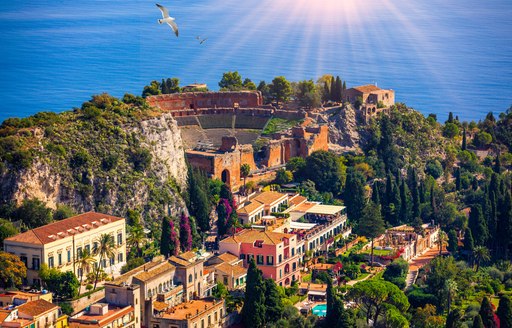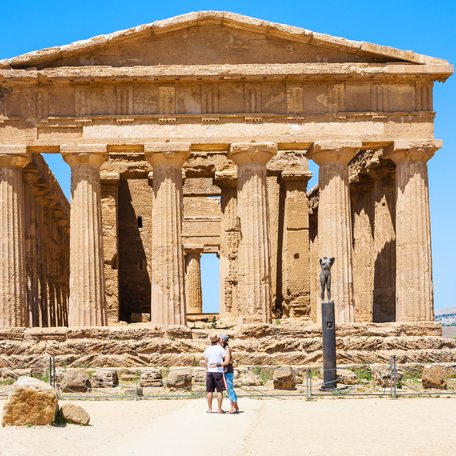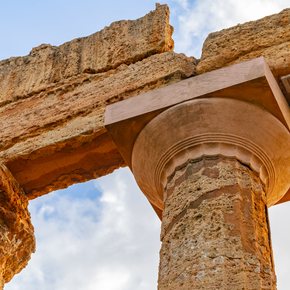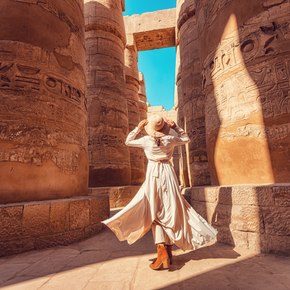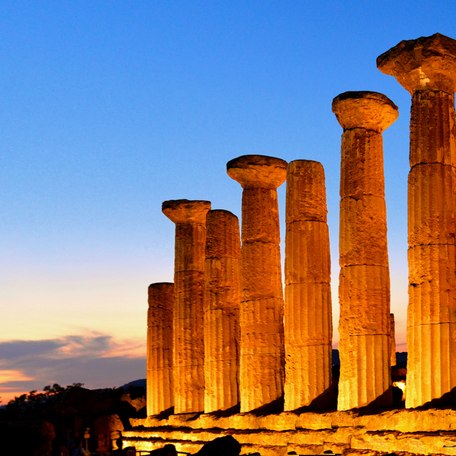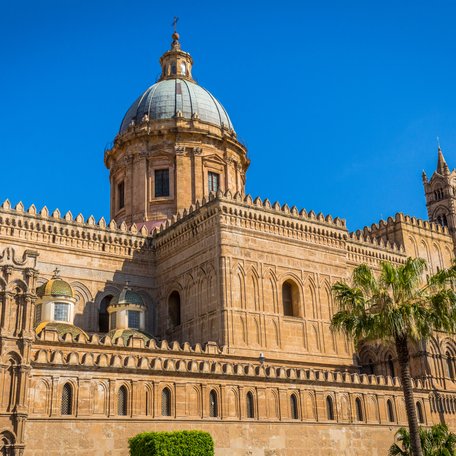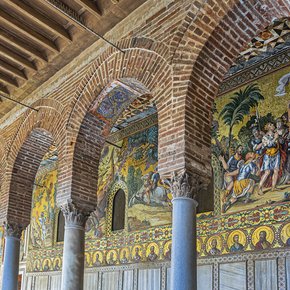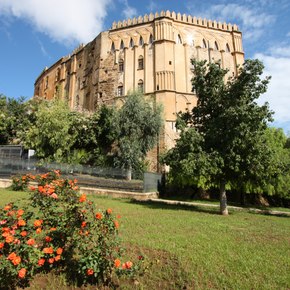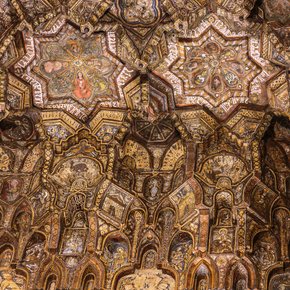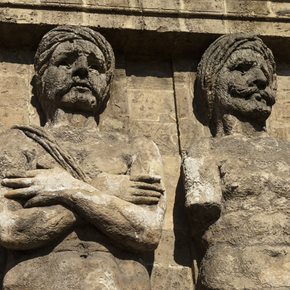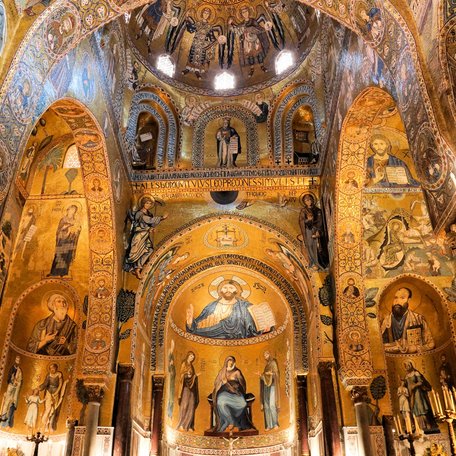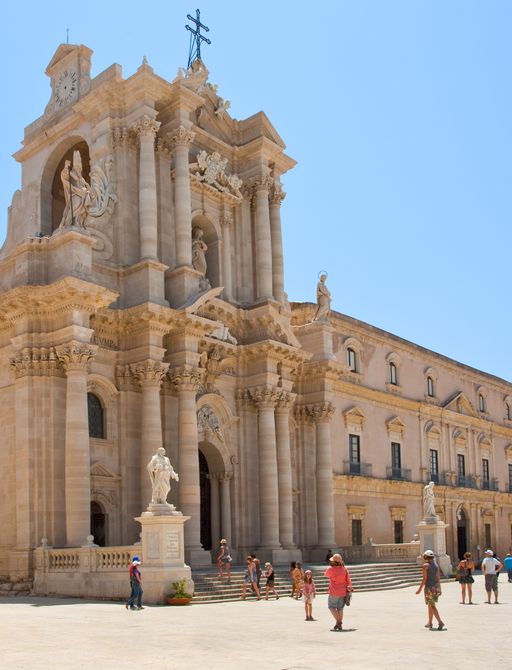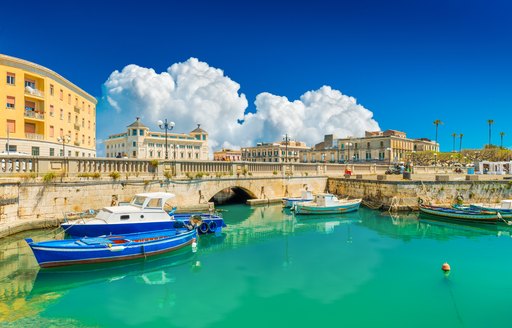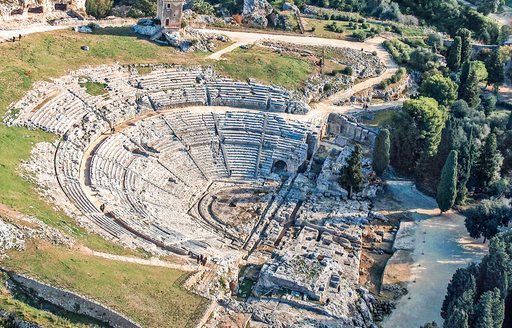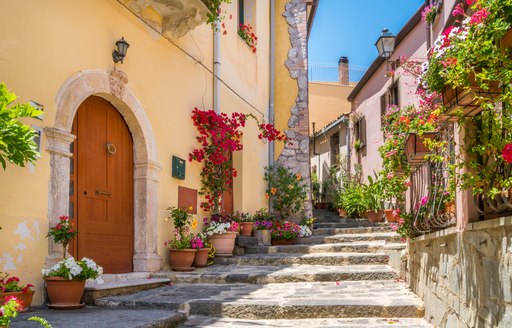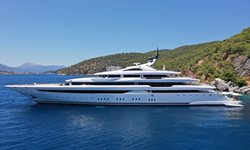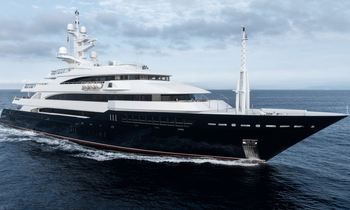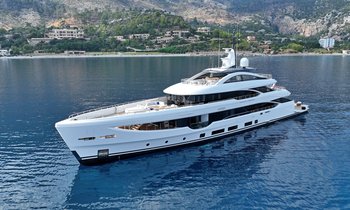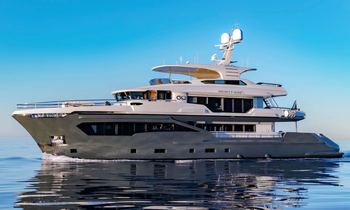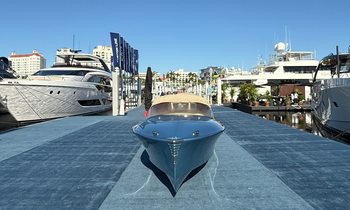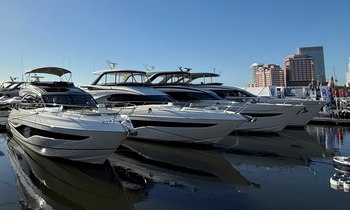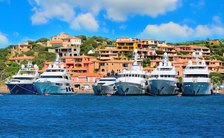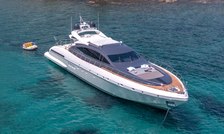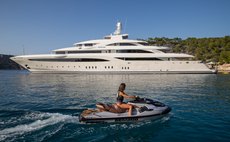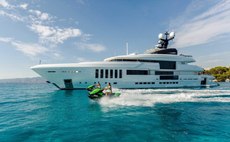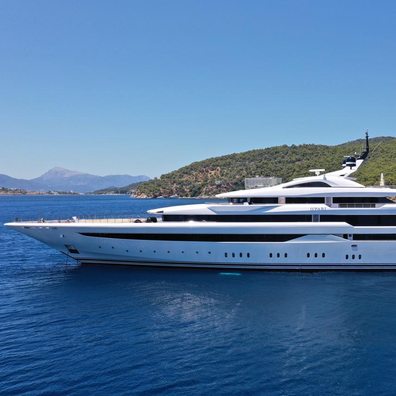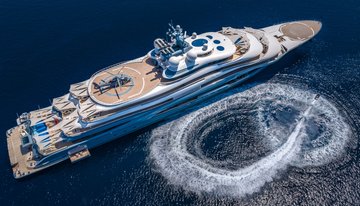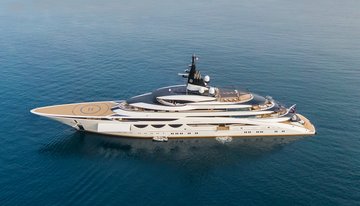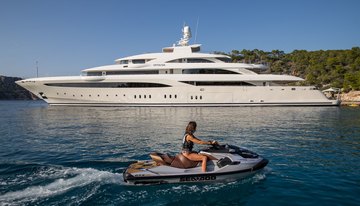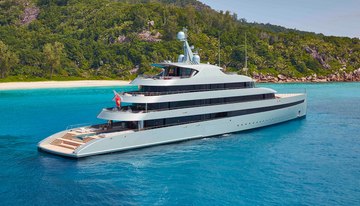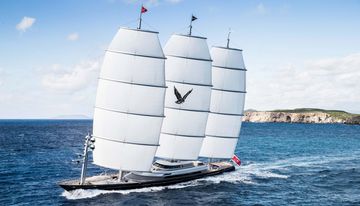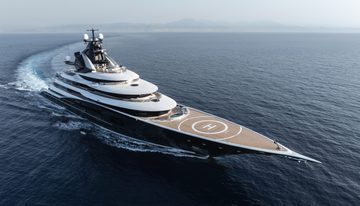Located at the bottom of Italy, the island of Sicily can sometimes be overlooked on a West Mediterranean yacht charter, where popular superyacht hotspots such as the Balearics, French Riviera and Amalfi Coast claim the vast majority of the traffic. However, as well as enjoying a semi-tropical climate and playing host to a spectacular array of idyllic beaches with gin-clear waters, you might be surprised to learn this Italian enclave boasts a veritable trove of ancient treasures.
From its glorious Greco-Roman amphitheater to its beautifully preserved Greek temples, Sicily is a true cultural gem waiting to be uncovered.
In this article:
Dominating the skyline is Sicily’s oldest and most venerated landmark Mount Etna, one of the world’s most active volcanoes – and the highest in Europe – that attracts thousands of tourists every year, with more adventurous souls climbing to the summit to peer into its fiery crater. From here you can see across to the Italian mainland as well over to the beautiful Aeolian Islands, which have their volcanic origins intrinsically linked with Sicily.
Forming the crossroads between Eastern and Western civilizations, Sicilian customs have been influenced by a melting pot of cultures due to its strategic spot in the Mediterranean, with its ancient paved roads, Doric shrines and beautiful Byzantine architecture all bearing witness to the island's deeply rich historical roots.
Mount Etna may lay claim as Sicily’s greatest natural attraction, however we’ve listed below 5 of the best cultural attractions that shouldn’t be missed on a luxury yacht charter in Sicily;
With breathtaking views offered through a wide opening in its crumbling facade over to the smoking crest of Mount Etna, the magnificent Greco-Roman amphitheater in the heart of Taormina is a masterclass of Hellenic and Roman architecture, where luminary greats such as Aeschylus and Sophocles harnessed the theater’s extraordinary acoustics to convey their prose to an adoring crowd.
Perched on an elevated rocky promontory in the heart of Taormina, a charming medieval town on the east coast of Sicily, the Teatro Antico di Taormina was originally built by the Greeks in the 3rd Century BC. This involved excavating 100,000 cubic tonnes of rock from the mountain, with later extensions added by the Romans, who built monolithic columns and an innovative roof structure.
Once a popular stop-off on the Grand Tour for the upper classes in the 18th and 19th Centuries, today the theater plays host to an array of events such as plays, concerts and award ceremonies, where thousands flock to experience the sheer majesty of this ancient architectural triumph for themselves, while enjoying glorious views of the perpetually smoldering Mount Etna in the distance.
Tickets for events are easy to book online, which can be done through a number of operators. Speak with your yacht charter broker who can organize tickets for you and your guests on your chosen dates.
-
Teatro Antico
Landmark
Discovered in the 18th Century by European travelers, the Valley of the Temples, or Valle dei Templi, is considered to be one of the largest and best preserved archaeological sites in the world.
Located on the island’s southern coast just outside the town of Agrigento, this impressive UNESCO Heritage site consists of 8 temples that are understood to have been built by the Greeks somewhere between 6th and 4th-century BC in dedication to their gods, at a time when Greece ruled over several colonies in Southern Italy – collectively known as Magna Grecia, or Greater Greece.
These encompass the well-preserved temples of Hera, Heracles, Zeus, Castor and Pollux, Hephaestus and Demeter, with the Temple of Concordia being the largest and best preserved Doric shrine that gives Athens’ Parthenon a run for its money.
This ancient site is considered to be one of the finest examples of Magna Graecia architecture in the world, and certainly one of the best preserved second only to Athens’ world-famous Acropolis.
The temples and dedicated museum are open every day, allowing you and your guests to admire the beautiful Hellenic architecture and explore the site’s eerie tombs, as well as simply soaking up the awe-inspiring spectacle of this magnificent site.
Porto Empedocle, a harbor located 10 kms south west of Agrigento, is a short tender ride from a number of pretty anchorages, and a convenient embarkation point to the ancient site.
-
Valley of the Temples
Landmark
If there was a building that could encapsulate the rich cultural diversity of Sicily, then the Royal Palace could well be a contender. Otherwise known as Norman’s Palace, or Palazzo dei Normanni, this stunning Arab-Norman architectural wonder is the culmination of several centuries of rule.
With its roots as an important Arab fortification, it was converted into a palace in the 10th Century by the ruling Norman emperor Roger II, who ordered the subsequent construction of the Palatine Chapel (Capella Palatina) after his coronation.
This chapel perfectly symbolizes the wealth and political power of the Norman kingdom at the time, and is considered one of the most beautiful chapels in the world. Indeed, the decorative features of the chapel bear testimony to the coexistence in Sicily of the people of different origins and religions, including Muslim, Byzantine, Latin and Jewish.
The UNESCO protected building is located in Sicily’s capital of Palermo, a faded beauty that plays host to several other notable landmarks, including the Neoclassical Teatro Massimo, the world’s third largest opera house home to an array of world-class ballet and opera productions, as well as the sublime 12th-century Palermo Cathedral that also conceals beneath its tiled foundations a series of crypts serving as the final resting place for a number of important royals.
Once the greatest fortified city in all of Magna Graecia, Syracuse boasts a remarkably rich history as an economic, military and political powerhouse. Once a hotbed of megalomania, Syracuse has been at the epicenter of a number of strategic battles, with a flurry of building in between. This has culminated in the city's rich tapestry of Greek, Roman and Medieval architecture, as evidenced by its vast array of cathedrals, temples and fortresses.
At the heart of this ancient city lies the island of Ortygia, which is connected to the mainland via a causeway. The island is home to a huge collection of grand historic landmarks, including Greek temples, Norman architecture, Baroque cathedrals and Gothic palaces, each with their own unique story to tell, with the glorious Piazza del Duomo, a broad pedestrianized square awash with artists and musicians, at its center.
Don’t miss the Neapolis Archaeological Park, featuring one of Italy's largest Roman amphitheaters with seating for 15,000 spectators, and the Orecchio di Dionisio, a limestone cave shaped like a human ear.
Also well worth a visit is the beautiful Syracuse Cathedral, otherwise known as Santa Maria delle Colonne, which boasts an entire facade formed by the columns of an ancient temple to Athena, and the Villa Landolina, which houses Sicily's second-most important archeological museum, after Palermo, including some rare collections dating back to 6,000 BC.
Naturally, this ancient city has been accorded with UNESCO Heritage status, and visitors can journey back through 2,500 years of history by simply meandering its winding, labyrinthine alleys and vast catacombs.
Looking to the island's more recent cultural history, the reality of years of tyrannical rule under the Sicilian mafia, or Cosa Nostra, have left their indelible mark on countless Italian families, which was thrust into the spotlight by Francis Ford Coppola’s prodigious Godfather trilogy; a fictional familial drama based around the atrocities inflicted by the cartel spanning a number of decades.
Mercifully, serious mafia activity on the island has all but ceased, and today keen cinephiles can take a guided tour around some of the most iconic locations made famous by Coppola’s hugely popular films. This includes the pretty town of Forzà d'Agrò near Taormina where many of the village scenes took place, as well as the small medieval commune of Savoca, home to the infamous Bar Vitelli which Godfather aficionados will recognize as the fateful backdrop where Michael Corleone tells Apollonia’s father who he really is as he declares his intention to marry his daughter.
The town also features the beautiful sequestered church of San Nicolò, built atop a massive outcrop of rock, where Micheal and Apollonia kneel before the priest in the doorway of the church in the traditional Sicilian ceremony.
We recommend taking a guided private limousine tour that can be arranged to meet you and your guests at the yacht marina of your choosing, where you'll be whisked away in your very own private sanctuary to an array of famous settings where the films were shot.
Luckily, these places remain largely unchanged today and include memorable locations where the fictional Mafiosi ate, drank and worshiped. The tour includes plenty of time to explore and stop for refreshments, and is entirely flexible around the needs of you and your guests before being dropped back to the marina and your private charter yacht.
-
Godfather Tour
Activity
To find out more about chartering in the region, check out our Sicily yacht charter guide. For some inspiration, browse our selection of itineraries handpicked by experts with in-depth knowledge of the region.
If you wish to incorporate any of the places mentioned in this article into your Sicily yacht charter itinerary, please speak with a recommended yacht rental broker.
Alternatively, view and compare the complete fleet of luxury yachts available for charter in Italy.
RELATED STORIES
EDITOR'S PICK


